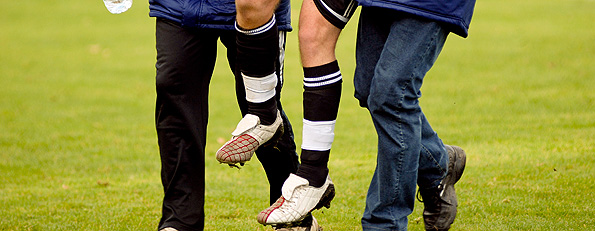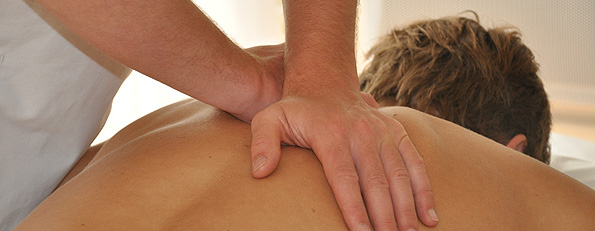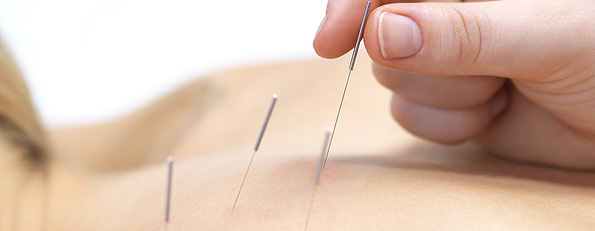Knee Injuries
Common Knee Injuries
Many athletes experience injuries to their knee ligaments. Of the four major ligaments found in the knee, the anterior cruciate ligament (ACL) and the medial collateral ligament (MCL) are often injured in sports. The posterior cruciate ligament (PCL) may also be injured.
- ACL injury
Changing direction rapidly, slowing down when running, and landing from a jump may cause tears in the ACL. Athletes who participate in skiing and basketball, and athletes who wear cleats, such as football players, are susceptible to ACL injuries. - MCL injury
Injuries to the MCL are usually caused by a direct blow to the outside of the knee. These types of injuries often occur in contact sports, such as football or soccer. - PCL injury
The PCL is often injured when an athlete receives a blow to the front of the knee or makes a simple misstep on the playing field. - Torn cartilage
When people talk about torn knee cartilage, they are usually referring to a torn meniscus. The mensicus is a tough, rubbery cartilage that is attached to the knee’s ligaments. The meniscus acts like a shock absorber. In athletic activities, tears in the meniscus can occur when twisting, cutting, pivoting, decelerating, or being tackled. Direct contact is often involved.
Treatment of Knee Injuries
Orthopaedic surgeons use a variety of methods to treat knee injuries in athletes. A common method used to treat mild knee injuries is R.I.C.E., which stands for “rest, ice, compression, and elevation.” Rest the knee by staying off it or walking only with crutches. Apply ice to control swelling. Use a compressive elastic bandage applied snugly, but loosely enough so that it does not cause pain. Finally, keep the knee elevated.
The most important advice is to seek treatment as soon as possible, especially if you:
- Hear a popping noise and feel your knee give out at the time of injury
- Have severe pain
- Cannot move the knee
- Begin limping
- Have swelling at the injury site
Knee (Patellofemoral Pain)
Runners, jumpers, and other athletes such as skiers, cyclists, and soccer players put heavy stress on their knees. Runner’s knee is a term used to refer to a number of medical conditions that cause pain around the front of the knee (patellofemoral pain). These conditions include anterior knee pain syndrome, patellofemoral malalignment, and chondromalacia patella.
Causes
The knee is a complex structure and is very sensitive. A number of factors can contribute to runner’s knee, including:
- Malalignment of the kneecap
- Complete or partial dislocation
- Injury
- Tightness, imbalance, or weakness of thigh muscles
- Flat feet
Patellofemoral pain may be the result of irritation of the soft tissues around the front of the knee. Strained tendons are fairly common in athletes. Other contributing factors to patellofemoral pain include overuse, muscle imbalance and inadequate stretching. Pain that begins in another part of the body, such as the back or hip, may cause pain in the knee (referred pain).
In some people with runner’s knee, the kneecap is out of alignment. If so, vigorous activities can cause excessive stress and wear on the cartilage of the kneecap. This can lead to softening and breakdown of the cartilage on the patella (chondromalacia patella) and cause pain in the underlying bone and irritation of the joint lining.
Symptoms
A dull, aching pain under or around the front of the kneecap (patella) where it connects with the lower end of the thighbone (femur). Pain occurs when walking up or down stairs, kneeling, squatting, and sitting with a bent knee for a long period of time.
Prevention
- Stay in shape. Good general conditioning is important to controlling and preventing patellofemoral pain. If you’re too heavy, you may need to lose weight to avoid overstressing your knees.
- Stretch. Before running or any other exercise, first do a 5-minute warm up, followed by stretching exercises. Stretching, particularly in the face down position (prone), will help keep the supporting structures around the front of the knee flexible and less likely to be irritated with exercise. For example, when lying prone, grab the ankle of the affected leg with one hand, and gently stretch the front of the knee. Stretch before and after exercise.
- Increase training gradually. Avoid sudden changes in the intensity of exercise. Increase force or duration of activities gradually.
- Use proper running gear. Use running shoes with good shock absorption and quality construction. Be sure that shoes fit properly and are in good condition. If you have flat feet, you may need shoe inserts.
- Use proper running form. Lean forward and keep your knees bent. Also, try to run on a clear, smooth, resilient, even, and reasonably soft surface. Never run straight down a steep hill. Walk down it, or run in a zigzag pattern.





